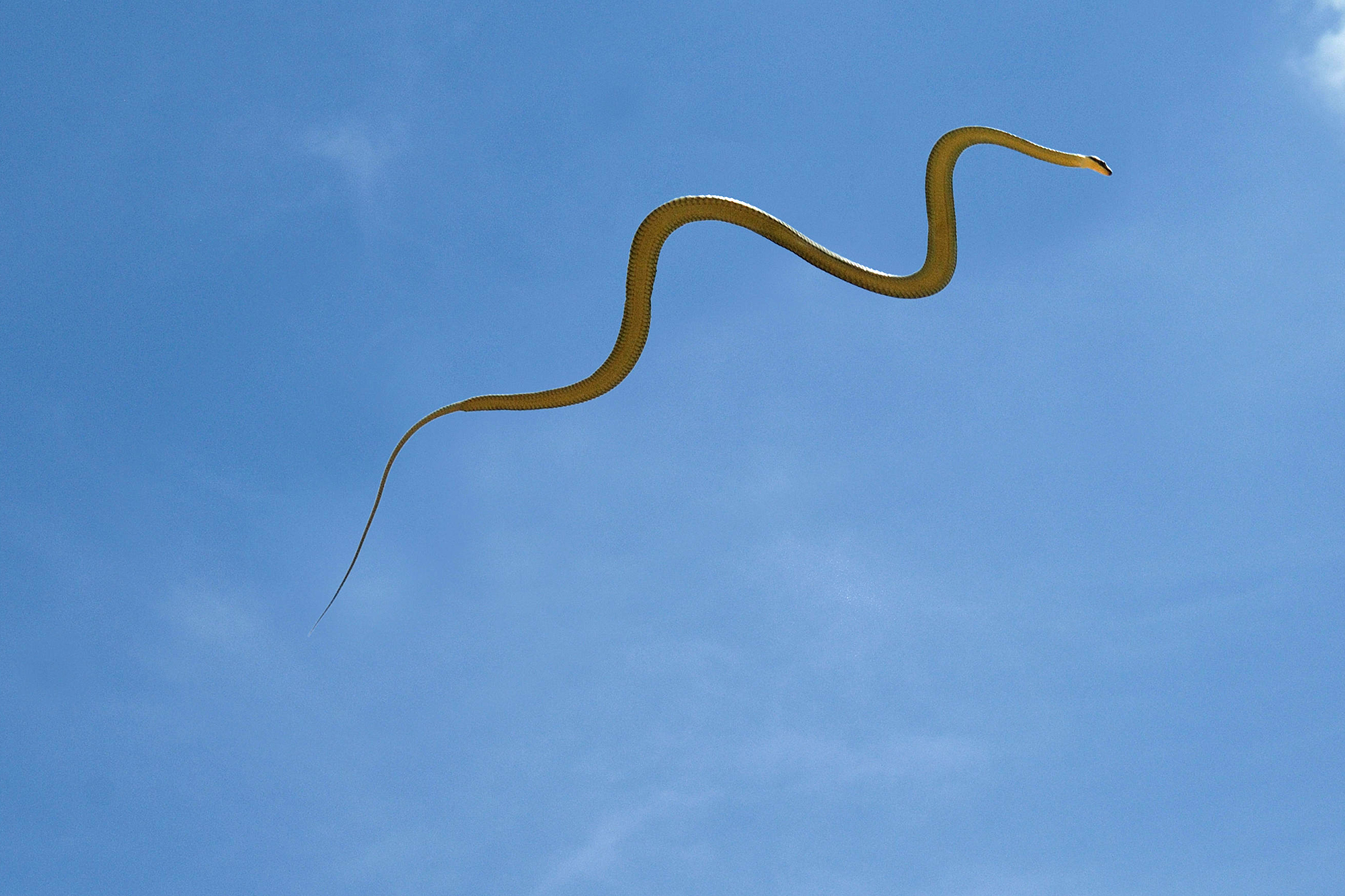Paradise tree snake (Chrysopelea paradisi) is one of the most unique of its kind. It is found in southeastern Asia and has the ability to fly from one branch to another.
It is commonly found in humid forests and has the capability to glide up to 100 meters at a stretch.
Recently, the mystery of the flying snakes has been solved, credited to a team of scientists. The paradise tree snake is able to are able to oscillate its body as they glide through the air. This unique movement allows them to hover from one branch to another.
Professor Jake Socha, from the Department of Biomedical Engineering and Mechanics at Virginia Tech, has found out that undulation is the basic program in the snake. He has been working upon these snakes for more than 20 years.
Socha interestingly elaborated –
“By program, I mean their neural, muscular program — they’re receiving specific instructions: fire this muscle now, the fire that muscle, fire this muscle. It’s ancient. It goes beyond snakes. That pattern of creating undulations is an old one. It’s quite possible that a snake gets into the air, then it goes, ‘What do I do? I’m a snake. I undulate.’”
Researchers Developed a 3D Model of Paradise Tree Snake
The future of search and rescue? Robotic flying snakes!🐍
A team of #VTEngineering researchers have developed the first continuous, anatomically-accurate 3D mathematical model of a paradise tree snake in flight. Read more: https://t.co/1vSxRL7MYr pic.twitter.com/qn2hWOfBTL
— Virginia Tech Engineering (@VTEngineering) June 30, 2020
Socha in a statement said –
“In all these years, I think I’ve seen close to a thousand glides,”. “It’s still amazing to see every time. Seeing it in person, there’s something a little different about it. It’s shocking still. What exactly is this animal doing? Being able to answer the questions I’ve had since I was a graduate student, many, many years later, is incredibly satisfying.”
Researchers conducted a large number of experiments and developed a 3D model based on the observation which they made.
They recorded more than 100 snake gliding in the air. They collected data on the frequency and direction of undulating waves, forces acting on the body, and mass distribution.
Undulating flying snake vs a ‘frozen’ snake. Undulation keeps the snake upright, enabling it to glide. A non-undulating snake tips over
See the @NaturePhysics paper https://t.co/koKNGn31W1
or watch a short summary https://t.co/OPOSqoN0CL@isaacyeaton @snake_flyer #flyingsnakes pic.twitter.com/Gue2PUInZN
— Shane Ross, PhD (@RossDynamicsLab) June 30, 2020









